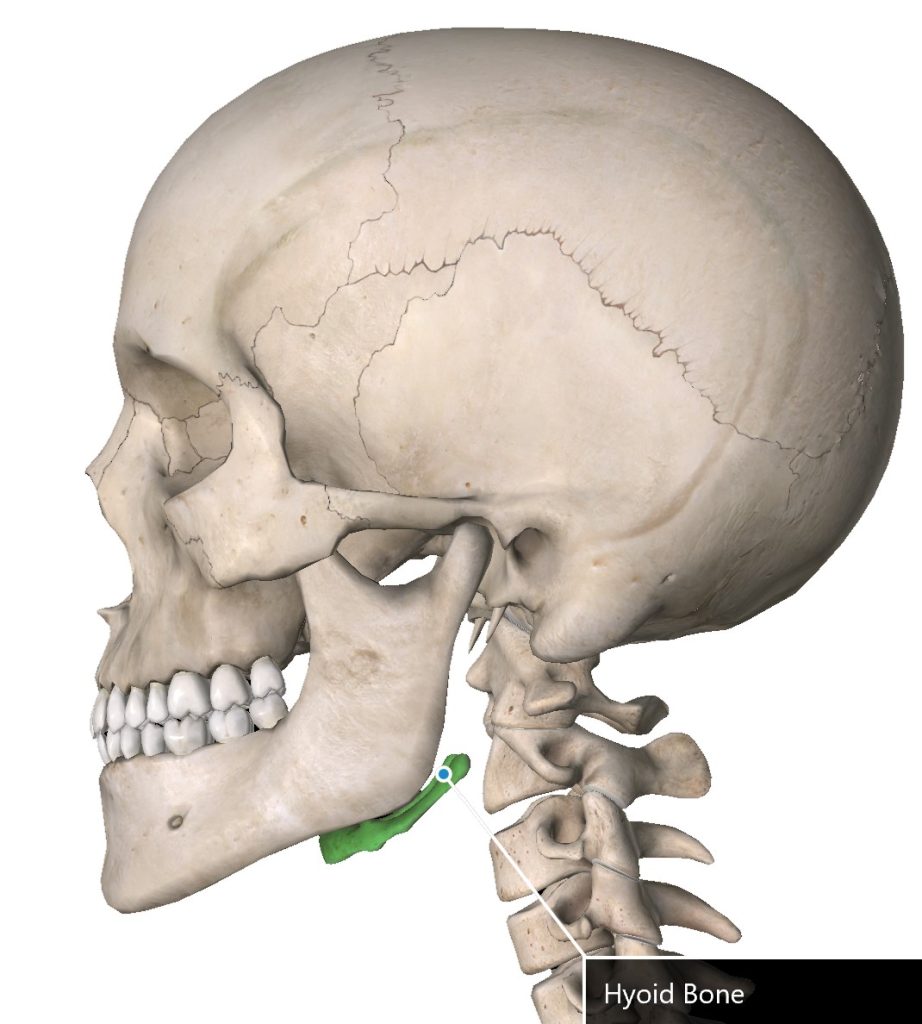Hyoid Bone Therapy: Unlocking Voice, Shoulder, and Jaw Tension with Gentle Craniosacral Techniques
Tiny Bone, Big Impact: How Hyoid Bone Therapy Can Shift Voice, Jaw & Shoulder Tension
I’m a firm believer that every part of the body has a purpose. If it didn’t, it wouldn’t be there. Our human anatomy is so beautifully intelligent that even the smallest bones serve a greater function.
One such unsung hero? The hyoid bone.
This small, horseshoe-shaped bone—often overlooked in both conventional and natural medicine—is the only bone in the body that doesn’t directly articulate (touch) any other bone. It just floats in the upper throat area, supported entirely by muscle and connective tissue. And that’s exactly what makes it such a powerful gateway to unlocking stored physical and emotional tension.
What Is the Hyoid Bone, and Where Is It?
If you gently place your fingers at the top of your throat (just under the jaw) and swallow, you might feel something rise and fall. That’s your hyoid bone. If what you’re feeling is soft and cartilaginous, that’s your thyroid cartilage—move a little higher.
The hyoid moves when you swallow because it’s connected to a surprisingly large number of muscles, including those from the jaw, collarbone, sternum, and shoulder blade. This extensive muscular connection is part of why hyoid bone therapy can have such far-reaching effects.
Why the Hyoid Bone Matters
1. It Impacts Jaw and TMJ Function
The hyoid is closely connected to the mandible (jawbone) via several muscles. If you’re struggling with TMJ dysfunction, jaw tension, or clenching, hyoid restriction could be a contributing factor. Releasing this bone using biodynamic craniosacral therapy may bring surprising relief.
2. It Affects the Voice and Breath
Because of its location near the voice box, working with the hyoid bone can noticeably affect the tone and depth of your voice. After one of my own hyoid releases, I walked out speaking in a lower tone than before. Professional singers, opera performers, and public speakers can benefit immensely from this subtle yet powerful work.
3. It Influences Shoulder Pain & Mobility
Here’s a fascinating link: the omohyoid muscle connects the hyoid bone to the shoulder blade. When this muscle is tight, it can contribute to chronic shoulder issues—even when the bigger shoulder muscles have been addressed with massage.
I’ve experienced this firsthand. After receiving a craniosacral hyoid release with attention on the omohyoid, a persistent “click” in my shoulder completely disappeared. It was a missing piece I didn’t even know existed.
Example: The omohyoid muscle

The Reflex Connection: Jaw, Hyoid & Hips
In biodynamic craniosacral therapy, there’s an interesting observation: bones with similar shapes often have reflexive relationships. For example, the shape of the hip joint and the jaw joint (TMJ) mirror one another. Similarly, the jaw and hyoid bone resemble each other, and working on one often has an effect on the other.
This is why hyoid bone therapy can lead to unexpected shifts—in body, posture, and even emotional state.
A Powerful Yet Gentle Approach
Hyoid bone therapy through biodynamic craniosacral therapy is incredibly gentle. It doesn’t involve pressure or manipulation. Instead, it works with the natural rhythms of the body and its energetic systems, creating a space where tension can unwind organically.
When combined with other modalities like shamanic healing, the results can be even more profound.
Don’t Underestimate the Small Stuff
So next time you’re dealing with chronic jaw tension, recurring shoulder pain, or vocal strain, don’t overlook the tiny but mighty hyoid bone. Sometimes the smallest shift can create the most profound transformation.
